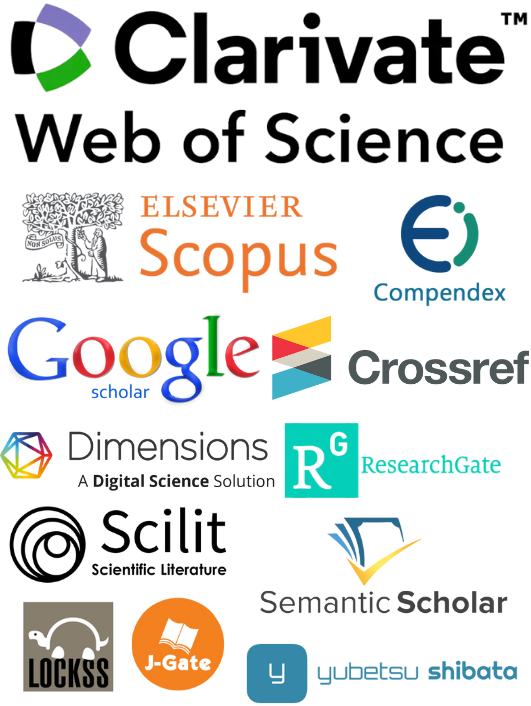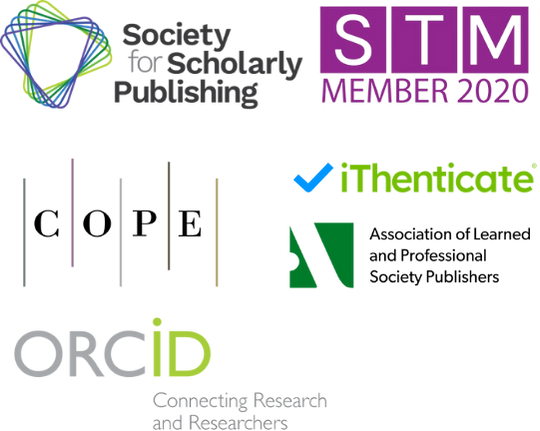Personalized Nutrition Recommendation System Based on Artificial Intelligence and Federated Learning
Keywords:
personalized nutrition, federated learning, multimodal health data, dietary intervention, health monitoringAbstract
This study developed a personalized nutrition recommendation system based on federated learning and multiple sources of health data, including clinical records, genetic information, lifestyle surveys, and physiological data from wearable devices. The system was designed to provide individual dietary advice while protecting user privacy. A six-month controlled study compared the outcomes of a personalized intervention group with those of a control group following standard dietary guidelines. Results showed that the personalized group achieved a 15% increase in dietary quality scores, along with better health outcomes. These included an average weight loss of 3.0kg, a 2.0% reduction in body fat, and higher rates of normal blood pressure and stable blood glucose levels. In addition, 80% of participants in the personalized group reported higher satisfaction, noting that the recommendations matched their preferences and were easier to follow. The system also included methods to explain how each recommendation was generated, helping users and health professionals better understand and trust the results. Overall, this approach shows promise for improving nutrition management and supporting long-term health.
References
1. D. Yach, C. Hawkes, C. L. Gould, and K. J. Hofman, "The global burden of chronic diseases: overcoming impediments to prevention and control," JAMA, vol. 291, no. 21, pp. 2616-2622, 2004, doi:10.1001/jama.291.21.2616.
2. J. Yin, X. Wu, and X. Liu, "Multi-class classification of breast cancer gene expression using PCA and XGBoost," Theoretical and Natural Science, vol. 76, pp. 6-11, 2025.doi: 10.54254/2753-8818/2024.19399.
3. S. Wang, R. Jiang, Z. Wang, and Y. Zhou, "Deep learning-based anomaly detection and log analysis for computer networks," 2024, arXiv preprint arXiv:2407.05639, doi: 10.48550/arXiv.2407.05639.
4. T. Zhang, B. Zhang, F. Zhao, and S. Zhang, "COVID-19 localization and recognition on chest radiographs based on Yolov5 and EfficientNet," in Proc. 2022 7th Int. Conf. Intelligent Computing and Signal Processing (ICSP), April 2022, pp. 1827-1830, doi: 10.1109/ICSP54964.2022.9778327.
5. D. Mozaffarian, "Dietary and policy priorities for cardiovascular disease, diabetes, and obesity: a comprehensive review," Circulation, vol. 133, no. 2, pp. 187-225, 2016, doi: 10.1161/CIRCULATIONAHA.115.018585.
6. A. Ramanagiri, M. Mukunthan, and G. Balamurugan, "Enhanced brain tumor detection using ResNet-50," in 2024 10th In-ternational Conference on Communication and Signal Processing (ICCSP), Apr. 2024, pp. 1708-1711. IEEE, doi: 10.1109/ICCSP60870.2024.10543742.
7. Z. Xu, Y. Gong, Y. Zhou, Q. Bao, and W. Qian, "Enhancing kubernetes automated scheduling with deep learning and re-inforcement techniques for large-scale cloud computing optimization," in Proc. Ninth Int. Symp. Advances in Electrical, Elec-tronics, and Computer Engineering (ISAEECE 2024), Oct. 2024, vol. 13291, pp. 1595-1600, doi: 10.1117/12.3034052.
8. Z. Wang, Y. Chen, F. Wang, and Q. Bao, "Improved Unet model for brain tumor image segmentation based on ASPP-coordinate attention mechanism," in Proc. 2024 5th Int. Conf. Big Data & Artificial Intelligence & Software Engineering (ICBASE), Sept. 2024, pp. 393-397, doi: 10.1109/ICBASE63199.2024.10762617.
9. H. Liu, Y. Xu, J. Huang, Q. Bao, and Z. Wen, "Surface defect detection based on machine learning and data augmentation," in Proc. 2024 IEEE 6th Int. Conf. Civil Aviation Safety and Information Technology (ICCASIT), Oct. 2024, pp. 1098-1103, doi: 10.1109/ICCASIT62299.2024.10827833.
10. L. D. Jones, D. Golan, S. A. Hanna, and M. Ramachandran, "Artificial intelligence, machine learning and the evolution of healthcare: A bright future or cause for concern?" Bone & Joint Research, vol. 7, no. 3, pp. 223-225, 2018, doi: 10.1302/2046-3758.73.BJR-2017-0147.R1.
11. J. B. Qiao et al., "Vitamin A-decorated biocompatible micelles for chemogene therapy of liver fibrosis," Journal of Controlled Release, vol. 283, pp. 113-125, 2018, https://doi.org/10.1016/j.jconrel.2018.05.032.
12. N. Gautam et al., "Artificial intelligence, wearables and remote monitoring for heart failure: current and future applications," Diagnostics, vol. 12, no. 12, p. 2964, 2022., doi: 10.3390/diagnostics12122964.
13. J. Zhu et al., "Multimodal nanoimmunotherapy engages neutrophils to eliminate Staphylococcus aureus infections," Nature Nanotechnology, pp. 1-12, 2024, doi: 10.1038/s41565-024-01648-8.
14. Wang, Y., Wen, Y., Wu, X., Wang, L., & Cai, H., "Modulation of gut microbiota and glucose homeostasis through high-fiber dietary intervention in type 2 diabetes management," World J. Innov. Mod. Technol., vol. 7, no. 6, Oct. 2024, doi: 10.53469/wjimt.2024.07(06).04.
15. Wang, Y., Wen, Y., Wu, X., & Cai, H., "Comprehensive evaluation of GLP1 receptor agonists in modulating inflammatory pathways and gut microbiota," World J. Innov. Mod. Technol., vol. 7, no. 6, 2024, doi: 10.53469/wjimt.2024.07(06).23.
16. I. K. Lee et al., "Micromolded honeycomb scaffold design to support the generation of a bilayered RPE and photoreceptor cell construct," Bioactive Materials, vol. 30, pp. 142-153, 2023, doi: 10.1016/j.bioactmat.2023.07.019.
17. N. Yodsanit et al., "Targeted PERK inhibition with biomimetic nanoclusters confers preventative and interventional benefits to elastase-induced abdominal aortic aneurysms," Bioactive Materials, vol. 26, pp. 52-63, 2023, doi: 10.1016/j.bioactmat.2023.02.009.
18. Wang, Y., Wang, L., Wen, Y., Wu, X., & Cai, H., "Precision-engineered nanocarriers for targeted treatment of liver fibrosis and vascular disorders," World J. Innov. Mod. Technol., vol. 8, no. 1, 2025, doi: 10.53469/wjimt.2025.08(01).07.
19. Y. Wang, Y. Wen, X. Wu, L. Wang, and H. Cai, "Assessing the role of adaptive digital platforms in personalized nutrition and chronic disease management," World J. Innov. Mod. Technol., vol. 8, no. 1, 2025, doi: 10.53469/wjimt.2025.08(01).05.
20. H. S. Jim et al., "Innovations in research and clinical care using patient‐generated health data," CA: a cancer journal for clinicians, vol. 70, no. 3, pp. 182-199, 2020, doi: 10.3322/caac.21608.
21. Y. Wang, Y. Wen, X. Wu, and H. Cai, "Application of ultrasonic treatment to enhance antioxidant activity in leafy vegetables," Int. J. Adv. Appl. Sci. Res., vol. 3, pp. 49-58, 2024, doi: 10.5281/zenodo.14275691.
22. Y. Wang, M. Shen, L. Wang, Y. Wen, and H. Cai, "Comparative modulation of immune responses and inflammation by n-6 and n-3 polyunsaturated fatty acids in oxylipin-mediated pathways," World J. Innov. Mod. Technol., vol. 7, no. 5, 2024, doi: 10.53469/wjimt.2024.07(05).17.
23. H. O'Reilly et al. "Utility of self-rated adherence for monitoring dietary and physical activity compliance and assessment of participant feedback of the Healthy Diet and Lifestyle Study pilot," Pilot and Feasibility Studies, vol. 7, pp. 1-10, 2021, doi: 10.1186/s40814-021-00786-3.
24. Y. Sun and J. Ortiz, "Rapid review of generative AI in smart medical applications," 2024, arXiv preprint arXiv:2406.06627, doi: 10.62051/ijcsit.v3n2.10.
Downloads
Published
Issue
Section
License
Copyright (c) 2025 Rui Zhou, Jian Wang, Yuxuan Li, Amanda Chen, Michael Wong (Author)

This work is licensed under a Creative Commons Attribution 4.0 International License.


